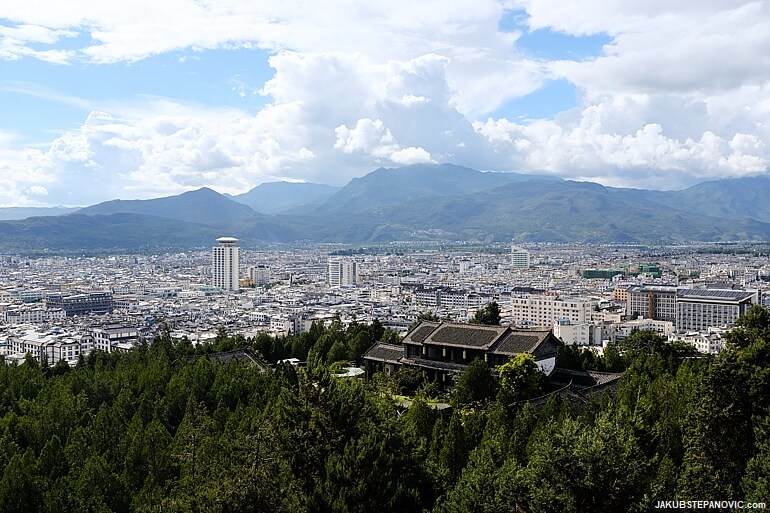
Visiting the centre of the ancient Nakhi Kingdom in Yunnan northwest.
Lijiang, Yunnan's prefecture-level city with a population of 1.3 million, has a history going back over 1,000 years. A prominent, still-standing reminder of its past is Dayan, Lijiang's old town, once a prominent place of the Ancient Southern Silk Road. Dayan was inscribed among the UNESCO World Heritage Sites in 1997, and since then, the city has been thriving as a tourist destination. So it happened; I visited it during my journey through the province.
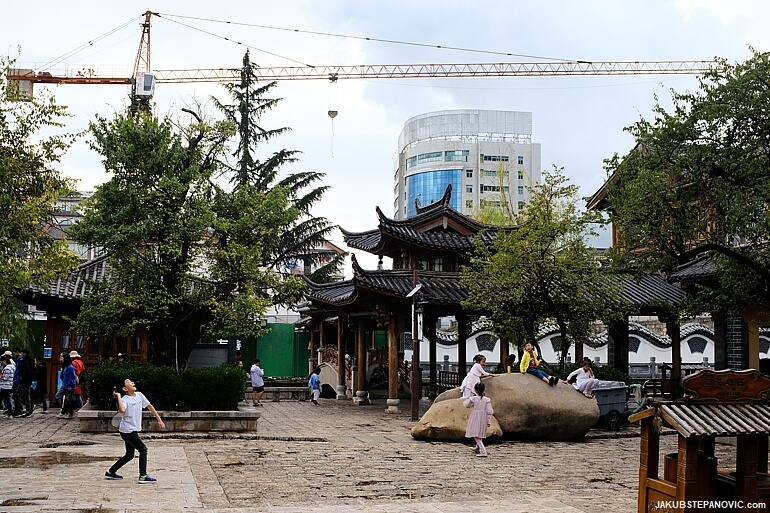
After my arrival, I left the hotel to get purposefully lost in the local streets, something I like to do to get a sense of the place. The alleys were surrounded by trees and other greenery, which made a pleasant environment for walking in.
Another thing I tend to do to establish an impression of a city is to get to a place with a good view. In China, these were often skyscrapers or TV towers, but here in Lijiang, I opted to hike up Elephant Hill, a place that promised a good outlook on the downtown.
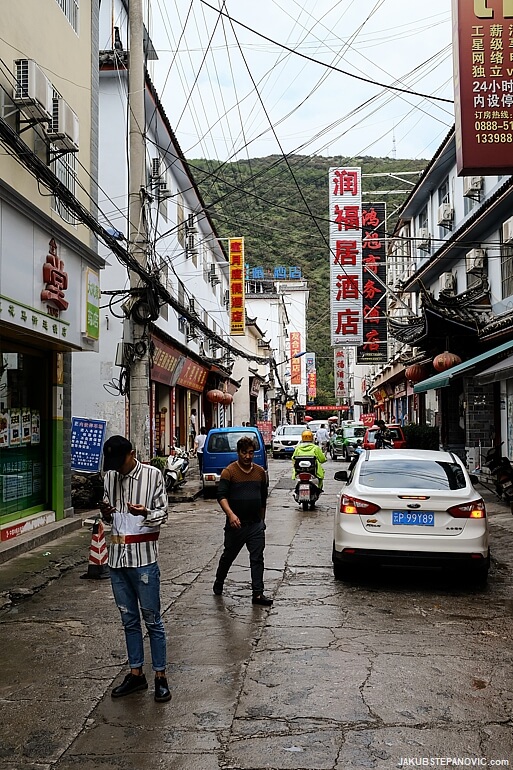
Approaching the wall of the Elephant Hill, which towers above the streets like a tsunami.
However, when I got there, I found out that they wouldn't allow people to enter after four in the afternoon – which had already passed. "Um, there goes the plan to see the evening light from the hill..." Thankfully, just underneath the hill is the Museum of Nakhi culture, which proved to be a good alternative. Nakhi is the dominant ethnic group of Lijiang, with specific language, customs, farming practices, and religion. It was an interesting stop, not only to learn about Nakhis but also about the relations of other ethnicities here. Yunnan has 26 ethnic groups.
A short walk from the museum is the Jade Spring Park, my next stop. The centrepiece of the park is the Black Dragon Lagoon with the Temple of Dragon King.
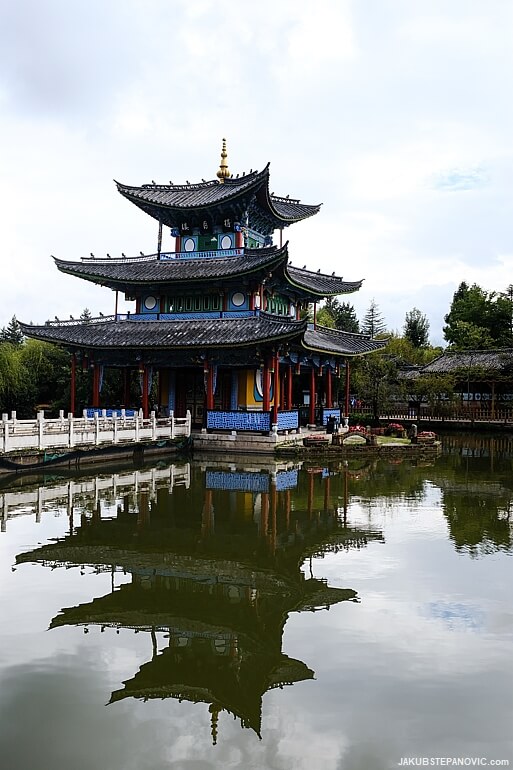
Temple of Dragon King.
The temple is possibly the most photographed scene in the city because in its backdrop can be seen the Yulong Snow Mountain, an ultra-prominent peak with an elevation of 5,596m / 18,360ft. Well, that is, unless it is cloudy like during the day of my visit. The mountain was thoroughly obscured; if I hadn't read about the mountain, I would not have guessed its presence at all. Still, the temple offered plenty of exciting angles to look at.
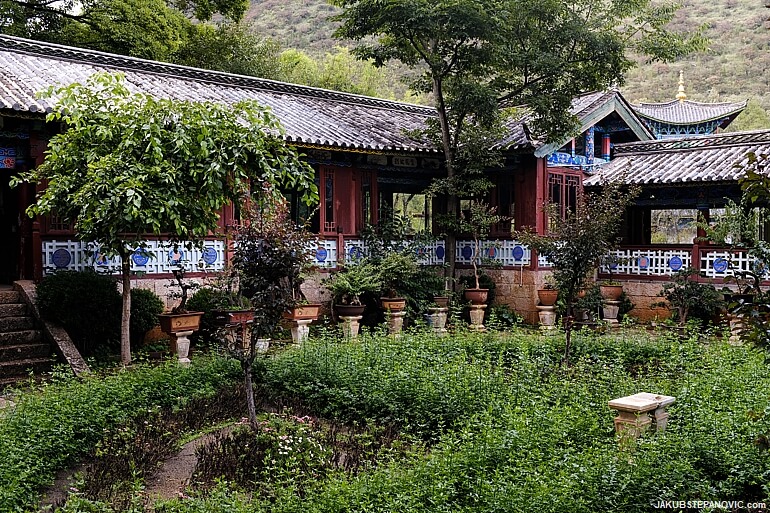
Just south of the temple sits the old town, so that's where I continued my walk. The place is a maze of narrow streets with a neat system of water canals – which are cool both for their visual qualities and as an infrastructure component.
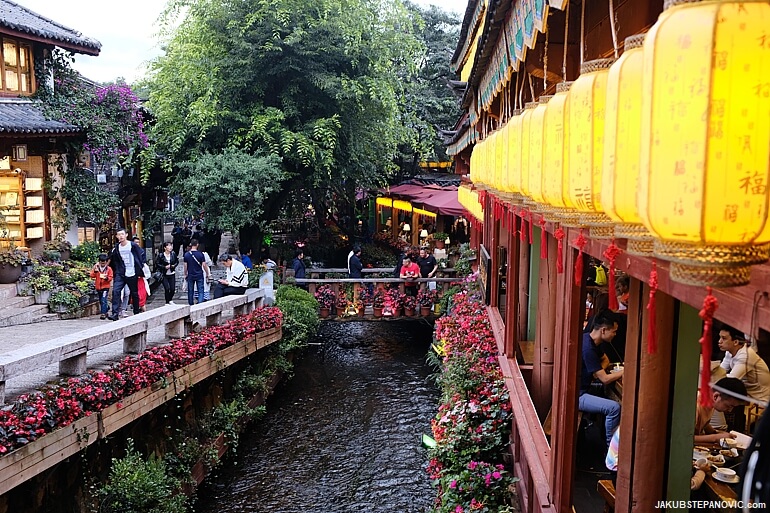
The old town is the most popular heritage-based tourist destination in the Yunnan province, and it lived to the status. Crowds were as far as one could see.

Most of the area is converted into shops, selling anything from Nakhi silk embroidery to books, perfumes and kitsch plastic gifts. And as always with Chinese old towns, there are loads of opportunities to try out a variety of food – satisfying both local and international tastes. Speaking of the latter, there was an Irish pub, and unexpectedly, "Prague Cafe." However, it was closed, so I couldn't investigate what the back story is, or if there is any. The local cuisine then scored in colours and an exotic factor (even after a few months, still).
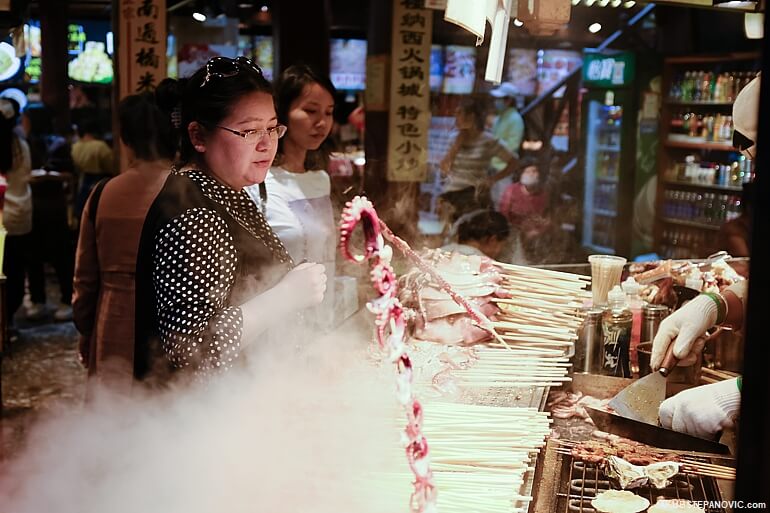
I must admit, my first impression of the old town wasn't as splendid as some of the glowing reviews I read. This was due to two factors: First, it is easy to recognize that the majority of its structures were built in recent years, which undermines the genius loci. I am not against sensible reconstruction or utilizing new technologies and methods, but when you walk on stone blocks precisely cut to the same measurements, and the wooden equipment around looks like it came from Ikea, it just doesn't line up too well with the "ancient" label. And second: I didn't particularly fancy the adaptation of some of the streets into a shopping hub.
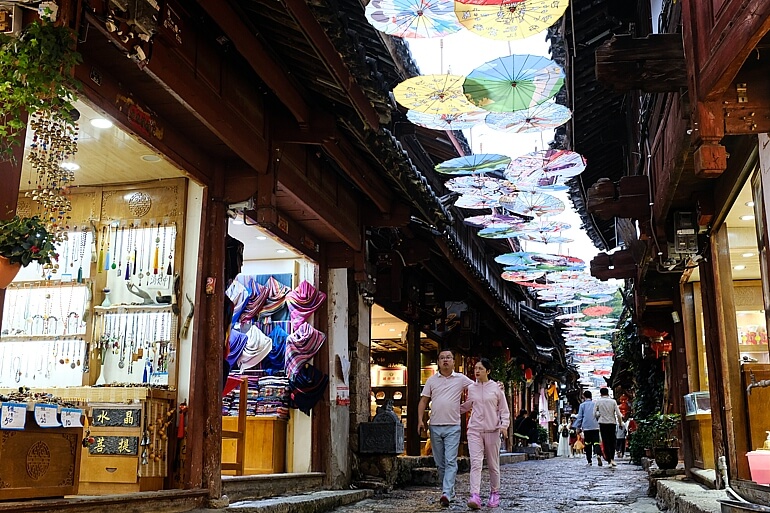
I wasn't the only one who was puzzled about the feel of the old town. When UNESCO published the results of their monitoring mission of the place in 2008, they noted an imbalance between heritage conservation and tourism development.
However, I also saw the other side of the coin. Lijiang was one of the province's poorest areas until the city started utilizing its potential for tourism in the 1990s. The efforts paid off, and in 2018, the old town was visited by 14 million tourists. These numbers are then reflected in the boom of the city's revenue and a massive hike in the locals' income, which is unarguably a positive progression for the region.
Also, a few weeks before my visit to Lijiang, I was in the capital city of the neighbouring Sichuan Province, Chengdu, where I saw the New Century Global Center – the world's largest building in terms of floor area. A portion of it is a massive mall, and it is rather ghastly. In that respect, I'd take a newly built "old town" shopping district over a dedicated ugly mall building all day, every day. Moreover, in Lijiang's old town, it is still possible to go off the main streets to get more of an authentic, attractive feel. That's what I did.
This was much better. More space to breathe, enjoy the carvings on the windows shutters and entrance beams and appreciate the facades' textures. In these back alleys, I found some hidden, quiet tea houses. I thought that merchants of ancient times could recharge here while travelling the Southern Silk Road (otherwise known as the Old Tea Horse Caravan Trail). Among the back streets are a few boutique hotels, some of which surprised me with roof access providing different, likeable views.

Getting my head around Dayan's spatial properties, as well as the different qualities it has to offer, I found a view looking back north, revealing the Elephant Hill again.
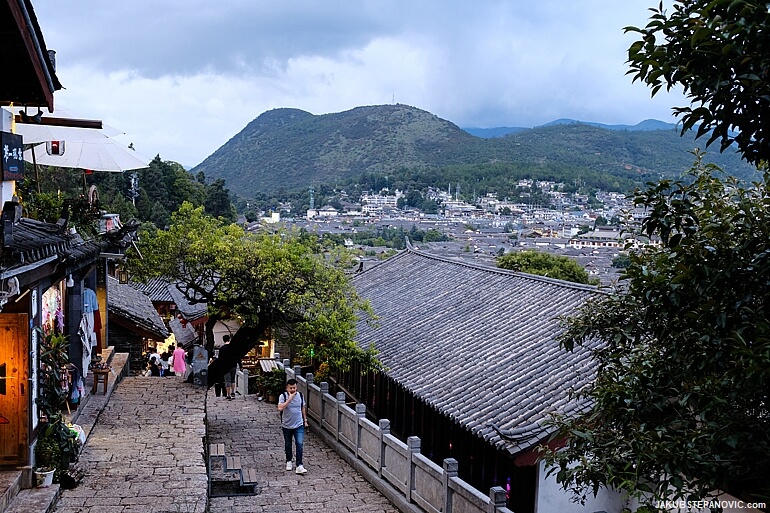
The Elephant Hill, as seen from Dayan, the old town of Lijiang.
"A plan for the next day!" I thought and continued my excursion of the old town.

As dusk started, artificial lights brought a new, vibrant atmosphere to the old town.

During the day, the streets are mostly composed of greys and earthy colours. But after the sunset, many of the previously faded areas are highlighted with saturated hues.

Another welcoming change was the temperature drop. Lijiang sits at 2,400m / 7,900ft, so it never gets as hot as some other Chinese cities, still, evenings proved more comfortable.
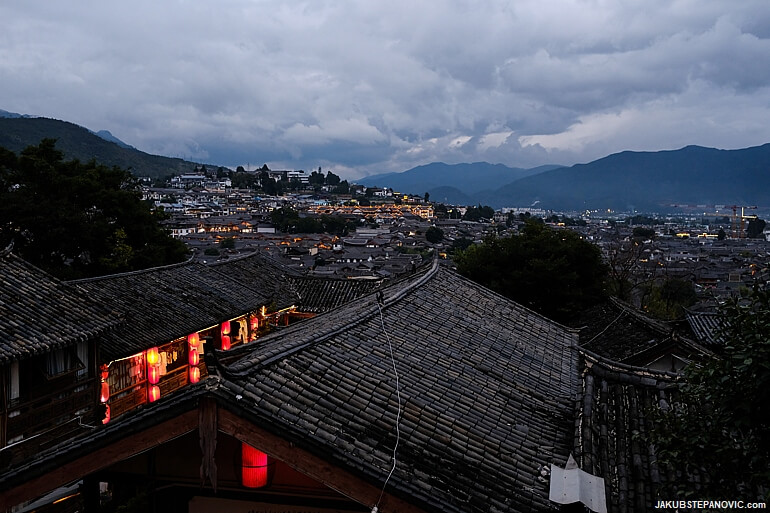
The evening was also an excellent excuse to try some street food, before seeing Dayan at night. It was dinner time, after all.
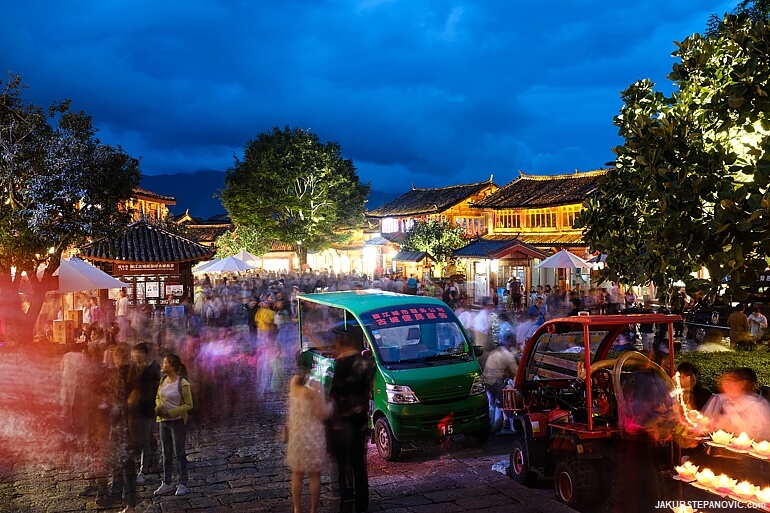
Old Market Square
When the daylight disappeared, the number of people didn't change; however, the age groups and interests shifted. Some of the restaurants cleaned their tables away, making room for a dancefloor, other buildings are adapted into nightlife venues to begin with. All of them brought in loads of young people.
To me, however, a more exciting element was to stay outdoors and observe other cultural habits. One of them was people getting candle boats made to look like lotus blooms, lighting them up, and sending them off on the canals' water while whispering a wish.

And the colours...! This was an excellent ending to my day.

The mission for the next morning was clear: get on the Elephant Hill. I arrived at the right time, paid an entrance fee, and I had to fill up a form with my passport number. Still, I was stopped at the gate again. The guards weren't happy that I was on my own. As it turned out, one of the many rules they have is that you can enter it only in a group of people, for safety reasons. There were also signs that you should have proper hiking equipment, water, and so on. I know that the hiking culture is not strong in China but seeing these folks treating me as if I wanted to attempt a solo ascent of Everest in flipflops, even though this hill's prominence is only some 300m / 1,000ft, was a comedy at best. Anyway, I was determined, and since I had already paid the fee, the guards eventually let me in. Let's get up, finally!
The Elephant Hill isn't tall, but it is pretty steep in places. Yet, because of a well-built trail full of stairs, one can be on the top in no time.

Before reaching the summit, there are a few gazebos with some fine outlooks on the city.
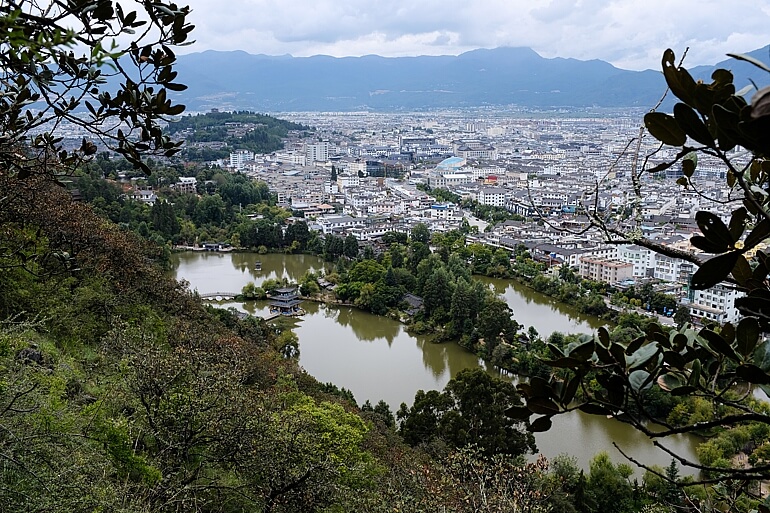
Overlooking the Black Dragon Lagoon from the Elephant Hill.
The hill is topped with a small pavilion with an observation deck, which, interestingly, offers a much better view on the opposite side of the downtown. While the downtown is behind trees, the other side reveals pretty hills rolling into the distance.

It would be another magnificent place to see the Yulong Snow Mountain. Alas, the clouds stagnated at the same height as yesterday, showing no sign of the peak's presence.
The name of the Yunnan province comes from the nearby-placed Yun Ling range, which translates as Cloudy Mountains." Clearly, they named it accordingly. And so, I started my way back towards the city by taking a longer path to the south.
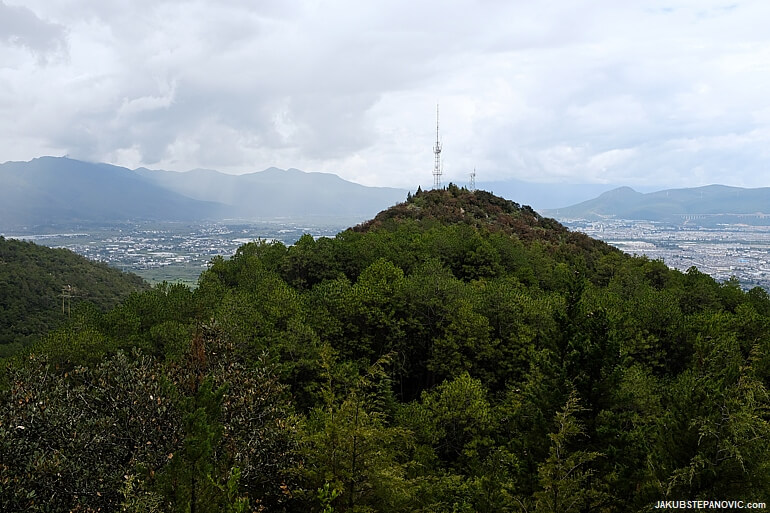
Along the way, there are two telecom towers (another potential observation decks), but perhaps more interesting are the Nakhi tombs spread around the hill.
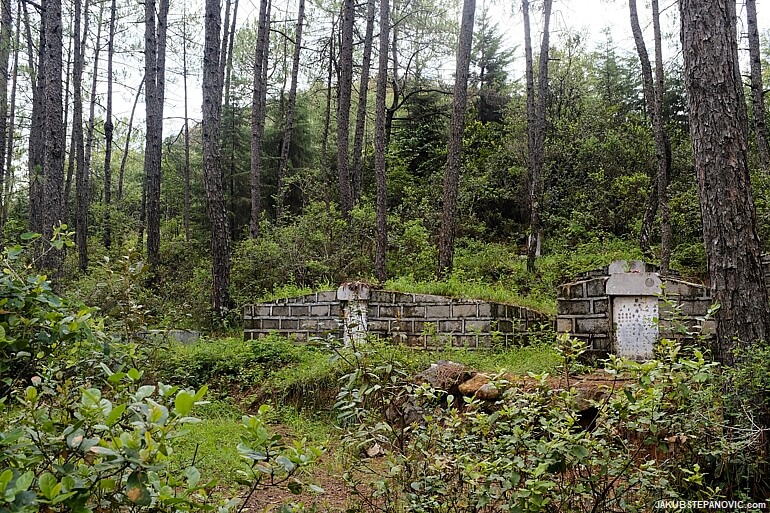
It was the first time I saw such tombs in China; they are pretty unusual. And while they looked quite overgrown, some were decorated with fresh flowers.
The descent was similarly steep and opened more neat vistas – this time looking at the city.
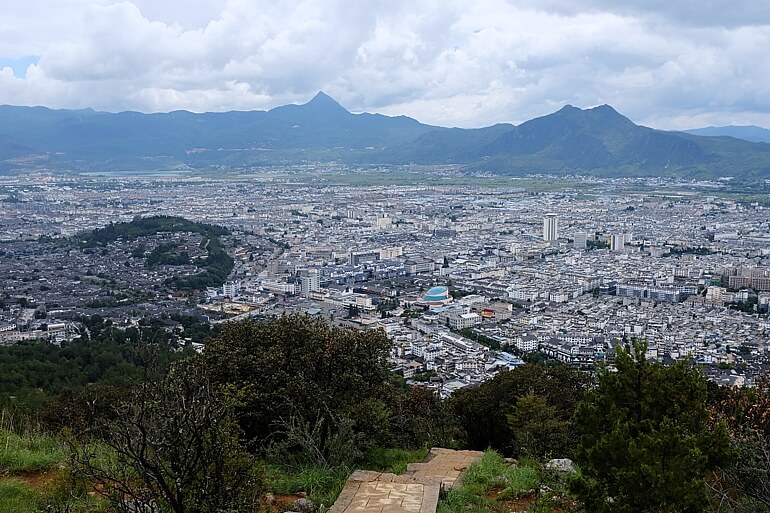
While the big mountain range to the north was in clouds, the southern mountains were in sight. I thought about how they could provide a great escape for locals, both in hiking and mountain biking qualities, but after the experience from getting on this hill, it will probably take a while before it becomes common here.
I noticed how quiet the hill was: no birdsongs, and I didn't see any other animals – until there was a cat towards the bottom of the hill. "Maybe that explains the lack of birds," I thought. Back in the city centre, I made my way through some less popular streets towards the old town again.
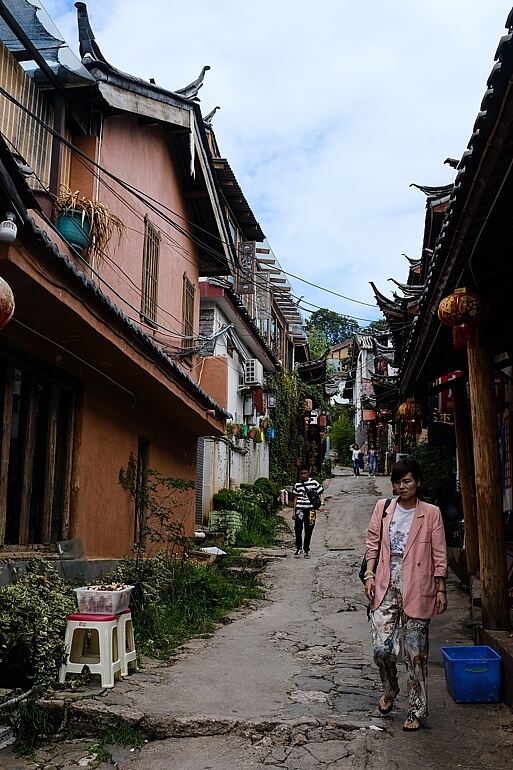
On the west side of the old town is another hill named after an animal, the Lion Hill. It is smaller, but it has Wangu Pavilion, and so it was my other plan for the day.

Wangu Pavilion on top of the Lion Hill.
The pavilion has some noteworthy decoration, but it didn't stand a chance compared with the 360-degree views all over Lijiang.
The structure is surrounded by old cypress trees, and as it sticks above their height, a fresh breeze brings in their nice smell through the open windows.
 One of the sights visible from the pavilion is the Mu Palace, the Nakhi rulers' home.
One of the sights visible from the pavilion is the Mu Palace, the Nakhi rulers' home.
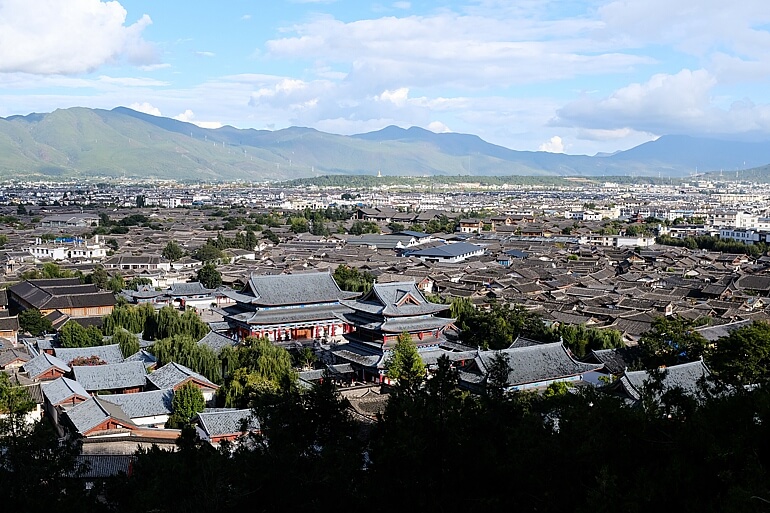
Mu's Palace
That's where I went next, as the afternoon sun came out.
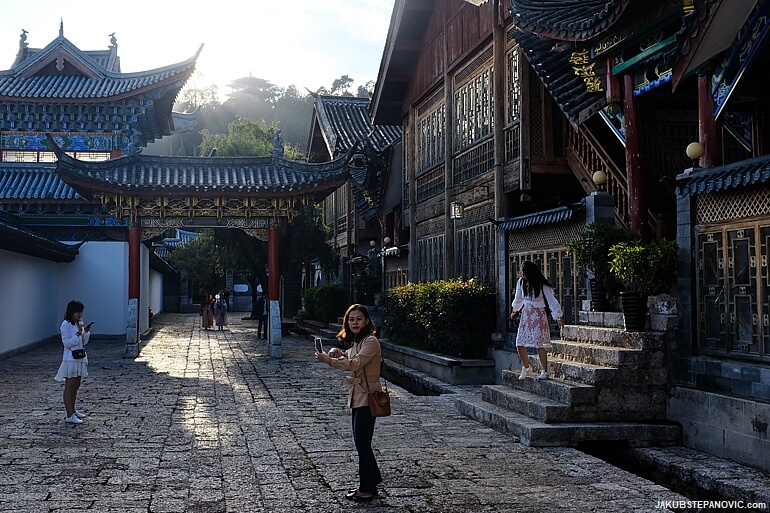
The sun made the town look very different from yesterday's overcast sky, so I revisited some of the locations in the old town..

...mostly the places with remarkable views.

I planned to watch the sunset while facing northwest, as that gave decent chances for seeing either colourful clouds or if they would break, the Yulong Snow Mountain.
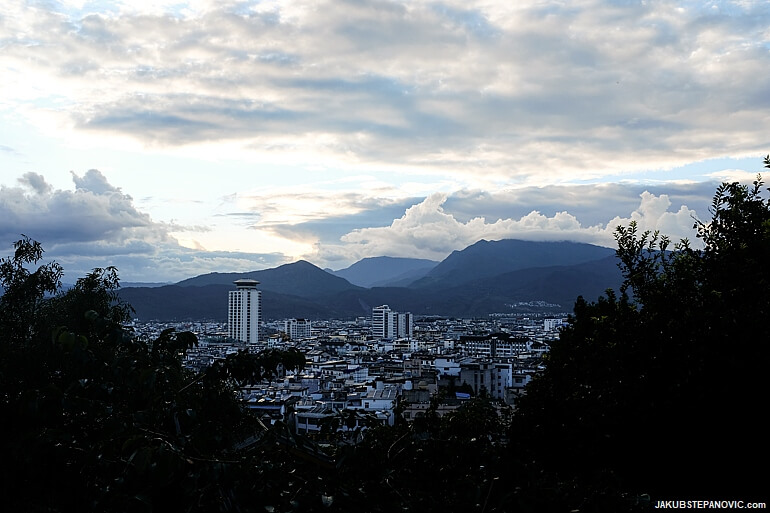
The clouds didn't break, they closed in instead. But it was fine; I was happy with what I got.
If you enjoyed this post, you might also like my stories about other Chinese cities, such as:
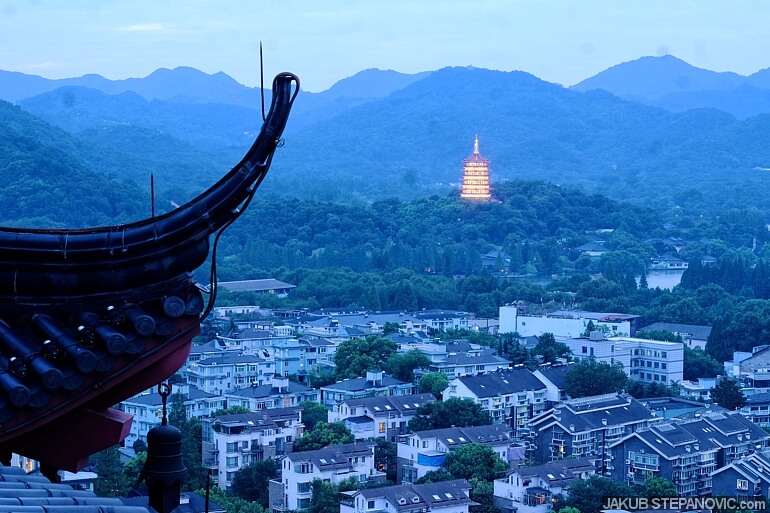
|
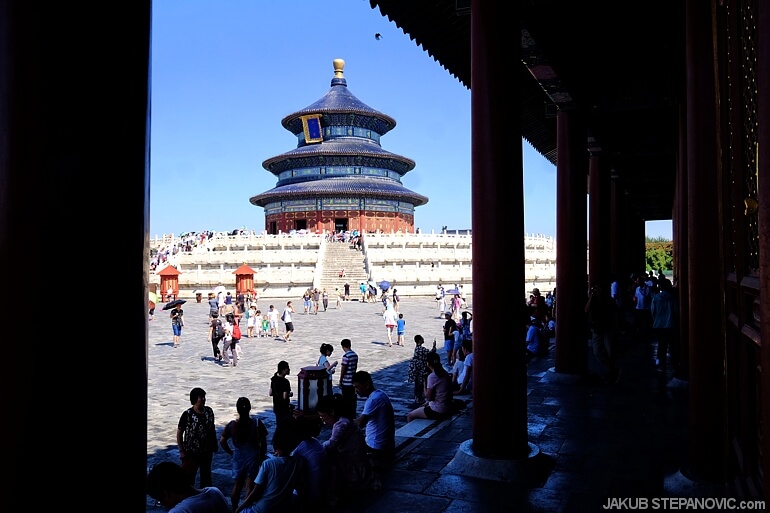
|
Alternatively, browse my Blog Archives for more topics and categories. Thanks for reading!




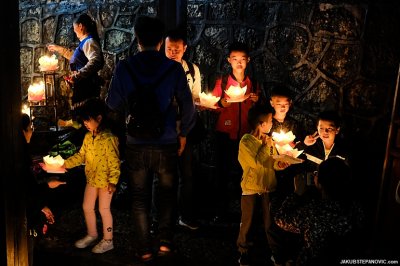

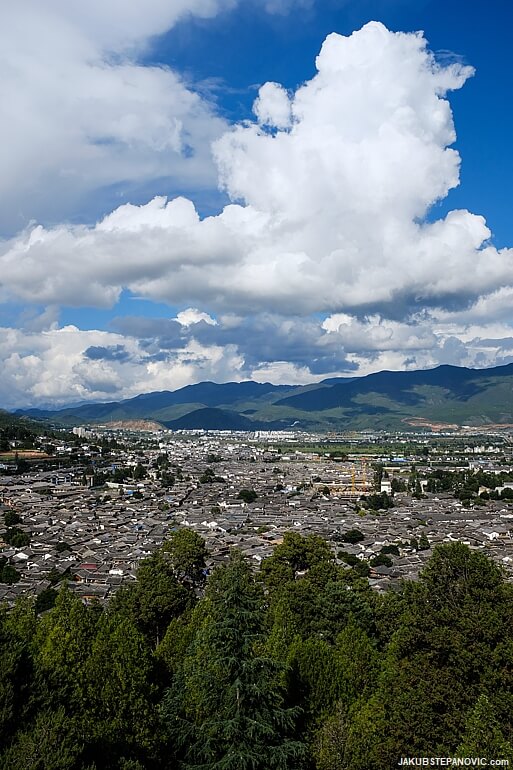
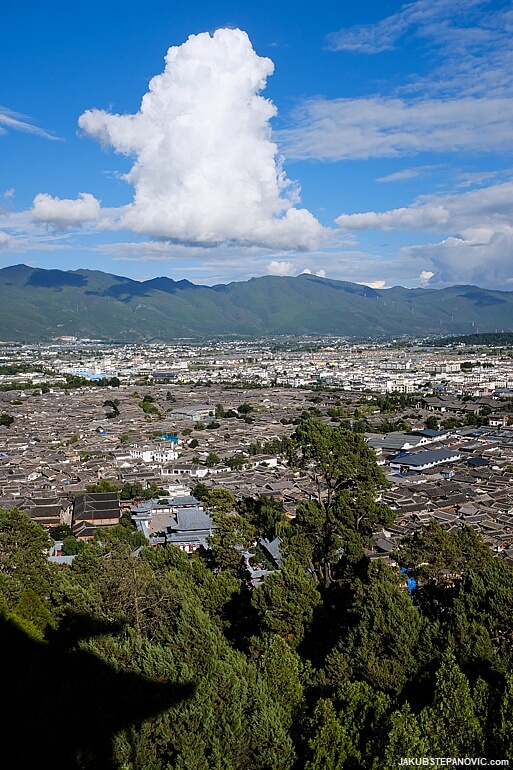
Comments are closed.